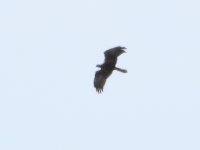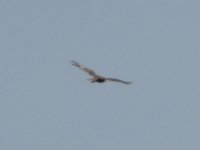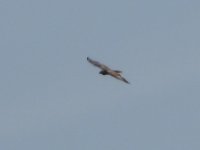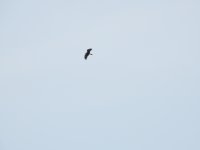Must be very early for Norway?
I’m in Spain (Strait of Gibraltar) at the moment for the honey migration, arriving 30 April. In normal years there are small numbers trickling through in late April, before a surge in the first few days of May. I always think 2nd or 3rd of May is a good time to expect the upswing, hence the timing of my current trip.
This year has been slightly different. Only a handful of records in the last week of April and only small numbers for the first few days of May, then on 5th May they went crazy. It’s the largest single day influx of raptors since they started keeping records. In a 90 minute spell Cazalla reported that their observers counted 10,000 honeys coming in. For the day as a whole it was 15,000 or more (I heard an unverified figure of 20,000) crossing the strait, plus about 2,000 griffons.
I was under that influx and it was breathtaking. standing at Punta Camorro from midday until about 3 pm the sky was full of them on a wide front. Incredible. The icing on the cake was an Eleonora’s falcon coming in about 15 minutes before the honeys kicked off (they started earlier further east on the strait before the wind turned up a notch from almost calm and pushed them my way), and one of two Ruppell’s vultures that came in with the mix.
It’s generally acknowledged that it takes three days in the autumn for southbound honeys to make the trip from the Pyrenees to Gibraltar. I’d imagine that northbound is pretty much the same. In that case the influx of three days ago is only now leaving Spain, so they’ve got some time to go before making their presence known further north. The numbers earlier were unusually low, a handful.
The movement continues. I had honey buzzards well into 4 figures over my holiday rental today between 08.20 and 17.00 when I went indoors to start the dinner.












